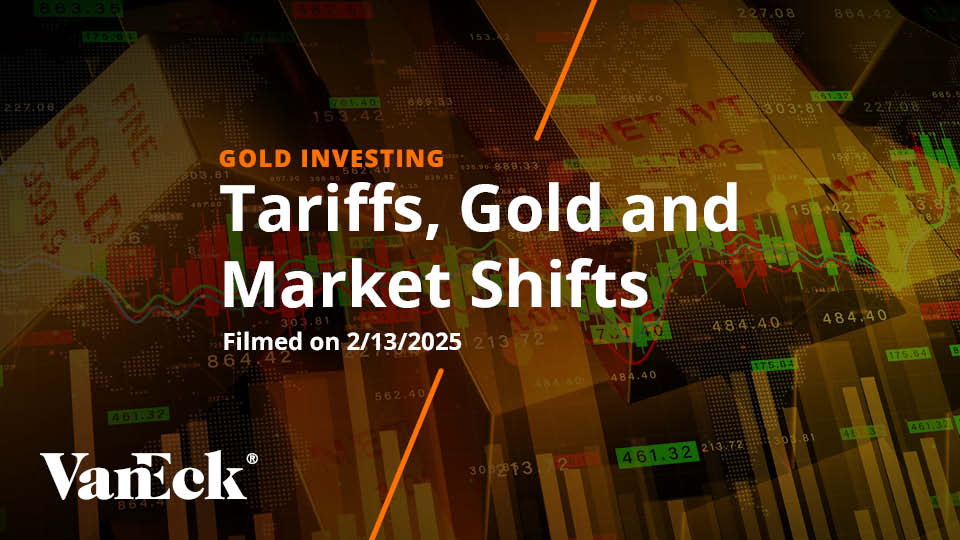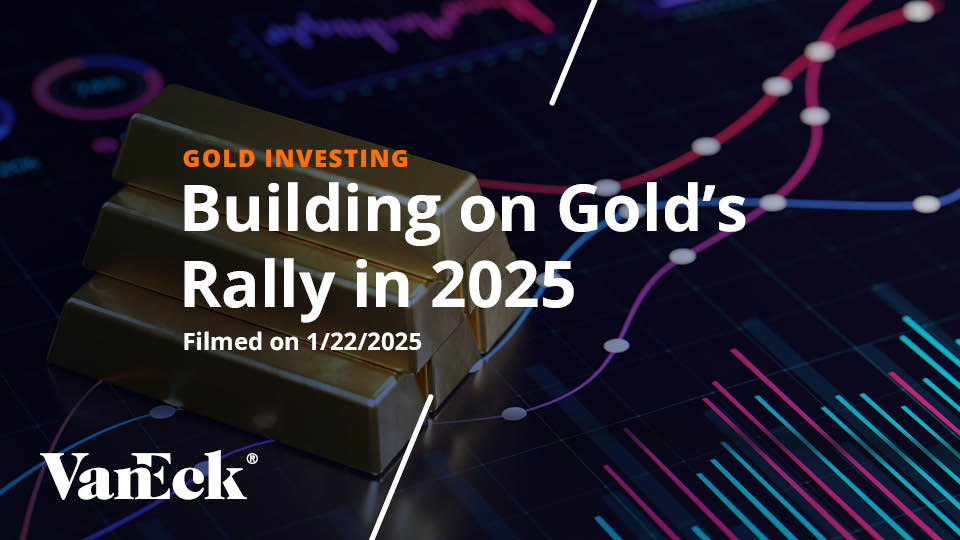Gold Heats Up on Warming Inflation
11 June 2021
Read Time 6 MIN
Gold Moves on Inflation (Finally)
There has been ample talk and plenty of anecdotal evidence of inflation this year, none of which has seemed to elicit much of a response from gold…until this month, that is. The first inflation-related report was released on May 12 from the Bureau of Labor and Statistics (BLS)—surprising the market with a 4.2% annual increase in the consumer price index (CPI).1 Gold fell that day, as the metal continued to take a skeptical view on inflation. However, the following day brought a 6.2% surprise in the BLS’s producer price index (PPI)2 and gold resumed its march to $1,900 per ounce. On May 14, the University of Michigan’s one-year consumer inflation expectations spiked to 4.6%. Then, on May 25, the Conference Board’s twelve month inflation expectations also soared to 6.5%. Finally, on May 28, the U.S. Federal Reserve’s (Fed’s) preferred inflation gauge, the core Personal Consumption Expenditures (PCE)3 price index, climbed to 3.1%. We assume economists have baked the pandemic base effect into their forecasts. Yet all of these measures beat analysts’ expectations, which suggests inflation maybe becoming more of a problem.
Being that May was basically the first month in 2021 that excessive inflation was actually reported in primary economic indicators, we believe that gold responded relatively nicely with an overall $137.74 (7.6%) gain to end the month at $1,906.87 per ounce. Gold stocks continued to lead gold out of its six-month correction with the NYSE Arca Gold Miners Index4 (GDMNTR) and the MVIS Global Junior Gold Miners Index5 (MVGDXJTR) advancing 14.3% and 14.8%, respectively.
It’s Been Awhile
Market measures of five-year inflation expectations are currently in the 2.5% to 3.0% range, which is in line with past post-recession levels. However, it has been many years since investors have had such a strong outlook for inflation. The Fed’s 5-year forward breakeven rate is at seven year highs while 5-year inflation swaps and treasury inflation protected securities (TIPS) breakeven rates are both at levels last seen in 2008.
The Fed, as well as many economists, believe that inflationary pressures will be transitory, brought on by micro- and macro-economic responses to the pandemic. Inflation typically sees a temporary surge as the economy emerges from recession. However, there is mounting evidence that the current environment is less like the one that followed the Global Financial Crisis (GFC) and more like the seventies.
The GFC was a crisis of banking failures and bailouts in which the financial system could not function normally and the Fed was authorized to pay interest on bank reserves for the first time. Unlike the GFC, the banks have remained healthy throughout the pandemic crisis and the financial system has thrived, thanks in part to the Fed’s rapid and massive response. In addition, the government wrote checks to the majority of American families and the money supply has increased as never before outside of World War ll. All of this liquidity has been sloshing around the economy creating financial bubbles. Now it is beginning to create wage and price inflation, and the Fed is loath to do anything about it.
The inflationary regime of the seventies had its roots in the Great Society launched by President Johnson in 1964 – 65. Like today’s Biden agenda, Great Society programs created new major spending on education, medical care, urban problems, poverty and transportation. According to Wikipedia, the main goal was the total elimination of poverty and racial injustice. When two oil price shocks occurred in the seventies, the high price of oil, combined with government spending on social programs and the Vietnam War, drove inflation to double digits.
What’s Different These Days?
Oil prices don’t have near the impact on today’s economy that they did in the seventies. However, prices today are rising across a much broader range, from oil to metals, lumber and agricultural commodities. Producers have been less willing to commit capital to increase production in this cycle, while the transition to a green economy is beginning to lift demand and/or costs to levels that may require prices to rise further. Many CEO’s from manufacturing to consumer goods companies speak of rising costs and/or expectations to raise prices this year and next.
In addition to commodities, here are other areas that suggest higher inflation could become more permanent:
- M2 money supply – the measurement of money supply including cash and checking deposits, as well as savings deposits, money market securities, mutual funds and other time deposits – is growing in the 20-30% range, twice the rate of peak money growth in the seventies.
- The housing shortage appears to be a systemic, lasting problem caused by the scarcity of land, over-regulation, and a shortage of labor.
- If the U.S. dollar weakness seen in 2020 (and again in the last two months) continues, imports will become more costly.
- The offshoring of cheap labor driven mainly by the industrialization of China has stalled and globalization may be reversing.
- Job openings surged in March to a record high, yet April nonfarm payrolls rose at just 27% of expectations. Many employers are having trouble finding qualified workers.
The Fed’s preferred inflation indicator (the PCE, as noted earlier) rose 3.1% in April, its fastest pace since 1992. The Fed claims it has the tools to deal with unwanted inflation, but will it use those tools? The Fed raised rates to quell the inflation of the seventies, at the cost of a severe recession in 1981. Back then, the debt/gross domestic product (GDP) ratio was around 25%. Now, with a debt/GDP of around 100%, a similar rise in rates would likely increase debt service costs to ruinous levels. Heavy debt loads tend to dampen economic activity. While former Fed Chair Paul Volker courageously faced a formidable challenge in the seventies, whoever is appointed Fed Chairman in February may face an impossible challenge in a modern Fed that might be reluctant to do anything that causes economic or social hardship.
Facing The Music
This is the first time in over 30 years that inflation has become a credible risk. Most working-age people have no experience or memory of an inflationary cycle, when the relentless rise in prices causes purchasing power to decline. Wage increases effectively evaporate year after year. While we won’t know until 2022 whether the recent rise is a temporary aberration of the pandemic, it is not too early to think about possible changes in spending patterns and investing.
Gold reacts to inflation when it becomes excessive and/or out of control. The chart shows that below an annual CPI change of 3%, there is no correlation between gold and the CPI. The correlation turns mostly positive above 3%, and above 4%, a more linear trend is established. In May, gold prices may have crossed a higher threshold if inflation is indeed here to stay.
Gold Highly Correlated With Inflation Above 3%

Source: VanEck, Scotiabank. Data as of April 2021.
Related Insights
IMPORTANT DEFINITIONS & DISCLOSURES
This material may only be used outside of the United States.
This is not an offer to buy or sell, or a recommendation of any offer to buy or sell any of the securities mentioned herein. Fund holdings will vary. For a complete list of holdings in VanEck Mutual Funds and VanEck ETFs, please visit our website at www.vaneck.com.
The information presented does not involve the rendering of personalized investment, financial, legal, or tax advice. Certain statements contained herein may constitute projections, forecasts and other forward looking statements, which do not reflect actual results. Information provided by third-party sources are believed to be reliable and have not been independently verified for accuracy or completeness and cannot be guaranteed. Any opinions, projections, forecasts, and forward-looking statements presented herein are valid as of the date of this communication and are subject to change without notice. The information herein represents the opinion of the author(s), but not necessarily those of VanEck.
The views contained herein are not to be taken as advice or a recommendation to buy or sell any investment in any jurisdiction, nor is it a commitment from Van Eck Associates Corporation or its subsidiaries to participate in any transactions in any companies mentioned herein. This content is published in the United States. Investors are subject to securities and tax regulations within their applicable jurisdictions that are not addressed herein.
All investing is subject to risk, including the possible loss of the money you invest. As with any investment strategy, there is no guarantee that investment objectives will be met and investors may lose money. Diversification does not ensure a profit or protect against a loss in a declining market. Past performance is no guarantee of future results.

